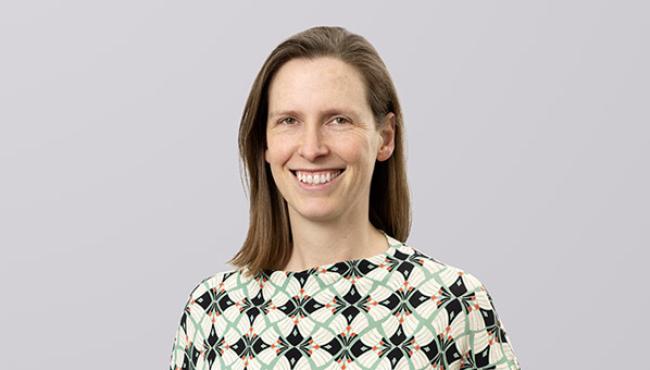
Where there's a will
Carbon markets are designed to be one tool in achieving net zero ambitions.
In this article, the focus lies specifically on the voluntary carbon markets (VCM) where buyers are typically large corporate organisations, and within the VCM, the focus lies on land-based greenhouse gas (GHG) removal.
A carbon credit, traded on the VCMs, is a token which represents either the removal or avoidance of greenhouse gases (GHG) from the atmosphere. Companies related to forestry that are generating GHG removals can measure their changes in carbon stocks and, assuming that those carbon stocks are greater than a baseline scenario, sell a corresponding amount of carbon credits to VCM participants. These credits are then purchased by other companies within voluntary markets, who wish to “offset” their own emissions.
Ambitious intentions beset with criticism
In many cases, GHG removals are generated by projects in developing countries, whereas the credits are purchased by companies in developed countries. In theory, corporate demand for carbon credits can implicitly benefit the host country in meeting national GHG targets in the land use, land-use change and forestry (LULUCF) sector. Therefore, credits have a dual purpose of channelling funds into forest and biodiversity conservation as well as climate-change mitigation by emission reduction.
Despite the ambitious intentions of carbon credits, the idea has been beset with criticism. The criticism falls into three main areas:
First, there are concerns that carbon credits offer a “get out of jail free card” for those companies that have large carbon emissions. Rather than reducing emissions related to the product, the company instead purchases carbon credits and uses this to “cancel out” the carbon dioxide that has already been emitted. The difficulty with this approach is that capturing one tonne of carbon dioxide now is not equal to one tonne of carbon dioxide that has already been emitted, at least not when it comes to measuring the impact on the climate. There is also concern that all this creates a distorted message, that we can tackle the climate crisis without making any changes to our existing way of life, as we can simply offset instead.
Second, concerns relating to methodological issues, leading to overstating of carbon removals, have been prominent in the press. Case studies conducted in the global South show that the poor estimation of baseline GHG emissions is the key cause of error when it comes to quantifying additional GHG removals.
A third area of concern relates to the potential of projects to have an adverse impact on local communities or exacerbate existing environmental issues. Projects that generate carbon credits are expected not to significantly impair any aspects of sustainability. In many areas, forests support local livelihoods and ways of living. International carbon standards require that projects driven by foreign demand must not jeopardise the need to meet local needs. Despite clear instructions and even careful project planning, it has been demonstrated that the reality in many cases does not meet the required conditions.
Improving practices
As carbon markets have developed, steps have been taken to mitigate these risks and address concerns. For example, the development of carbon accounting methodologies, and ongoing refinement will help to some extent.
Additionally, coalitions such as the Integrity Council for the Voluntary Carbon Market have been formed to define consensus-based standards and ensure integrity in the market. International frameworks, such as those from the Science Based Targets initiative (SBTi) and the Voluntary Carbon Market Initiative (VCMI) similarly seek to ensure that climate target setting follows a meaningful climate mitigation hierarchy: avoid, reduce, offset, neutralise.
Voluntary action for improving the integrity of carbon offsetting has also been taken by market participants that are showing thought leadership. Good practices are demonstrated by Microsoft, representing the demand side, and Nasdaq on the supply side. The former seeks to offset its entire carbon footprint including historical emissions, the latter aims to enable net zero for client companies via its Puro.earth marketplace which focuses on high-quality carbon removal technologies.
AFRY view
Whilst carbon markets were developed primarily to provide incentives for net zero, they also come with sizeable potential co-benefits to other aspects of sustainability, such as conservation, improvements in biodiversity and social benefits, provided that these forestry projects are executed in the right way. The importance of these should not be overlooked as the market strives to address its difficulties; there is more to be gained and there are bigger reasons to address the issues than carbon emissions alone.
The market must not, however, lose sight of the key principle of “do no harm” ensuring that carbon sequestration is achieved with co-benefits, and not at their expense. This philosophy is already reflected to some extent in some companies’ GHG reporting as they shift to a more holistic form of sustainability report. In this context, forests have a lot to offer as they deliver economic, social and environmental benefits.
Ongoing improvements in quality standards and governance have the potential to regulate the market effectively – and this is where the focus should remain, with the public continuing to hold the market to account. At the same time, however, care must be taken to ensure that the level of regulation does not create barriers to entry and discourage afforestation projects.
Organisations that are strong with their due diligence of carbon projects can confidently purchase credits, with transparency as to the value being delivered. All stakeholders have an additional role to play in educating people about carbon markets and the benefits that can be derived thereof.

Bioindustry Management Consulting
Our service offerings, from corporate strategy to process design and from market insights to operational efficiency backed up by an understanding of best practices, detailed in-house databases, and analysis led by experts in the field, ensure your outstanding performance. We want to be your trusted partner.






